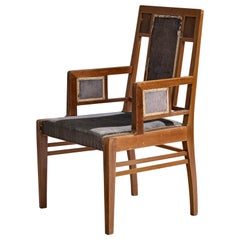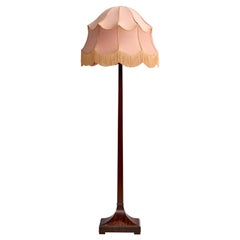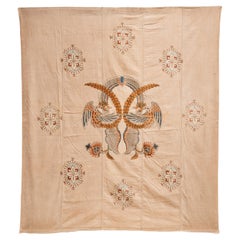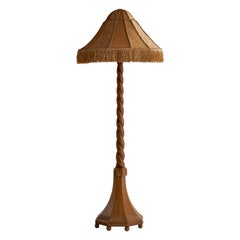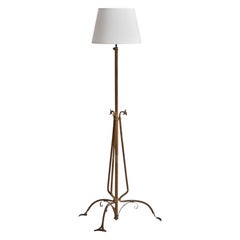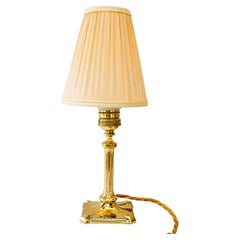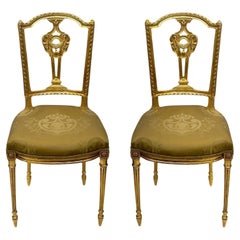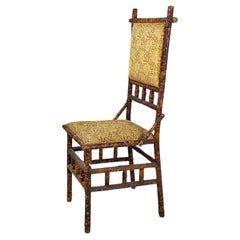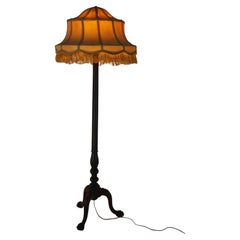1910s Fabric Furniture
Vintage 1910s Austrian Armchairs
Fabric, Wood
Vintage 1910s Swedish Floor Lamps
Fabric, Wood
Vintage 1910s Japanese Textiles
Cotton
Vintage 1910s Swedish Art Nouveau Floor Lamps
Fabric, Oak
Vintage 1910s Italian Art Nouveau Floor Lamps
Brass
Vintage 1910s Austrian Jugendstil Table Lamps
Brass
Vintage 1910s French Chairs
Fabric, Giltwood
Vintage 1910s Italian British Colonial Chairs
Fabric, Bamboo, Wood
Vintage 1910s Austrian Art Nouveau Floor Lamps
Fabric, Wood
Early 20th Century French Grand Tour Trunks and Luggage
Metal, Chrome
Early 20th Century Japanese Textiles
Fabric
Vintage 1910s Austrian Jugendstil Armchairs
Fabric, Beech
Vintage 1910s Austrian Jugendstil Settees
Fabric, Walnut
Vintage 1910s Czech Art Deco Chandeliers and Pendants
Metal
Vintage 1910s Austrian Vienna Secession Stools
Fabric, Beech
Vintage 1910s Dutch Other Dining Room Chairs
Fabric, Oak
Vintage 1910s American Arts and Crafts Screens and Room Dividers
Metal
Vintage 1910s Czech Art Deco Armchairs
Fabric, Wood
Vintage 1910s German Art Nouveau Toys and Dolls
Metal
Vintage 1910s German Hollywood Regency Toys and Dolls
Metal
Vintage 1910s French Art Deco Stools
Fabric, Walnut
Vintage 1910s Austrian Art Deco Armchairs
Fabric, Upholstery, Wood, Mahogany, Lacquer
Early 20th Century Swedish Gustavian Armchairs
Wood, Fabric
Early 20th Century Czech Art Deco Armchairs
Fabric, Upholstery, Wood, Oak, Lacquer
Vintage 1910s Austrian Art Deco Living Room Sets
Upholstery, Wood, Oak, Fabric, Lacquer
Early 20th Century Austrian Art Deco Sofas
Fabric, Wood, Upholstery, Beech, Lacquer
Vintage 1910s Danish Renaissance Chairs
Oak, Fabric
Early 20th Century Swedish Chairs
Fabric, Birch
Early 20th Century Austrian Art Nouveau Footstools
Fabric, Wood, Beech
Vintage 1910s Swedish Lounge Chairs
Fabric, Birch
Vintage 1910s Finnish Art Nouveau Armchairs
Copper
Vintage 1910s French French Provincial Armchairs
Fabric, Oak
Vintage 1910s Italian Art Nouveau Club Chairs
Walnut, Upholstery
Vintage 1910s European Art Deco Armchairs
Fabric, Wood
Early 20th Century American Biedermeier Rocking Chairs
Fabric, Mahogany
Vintage 1910s French Napoleon III Dining Room Chairs
Fabric, Straw, Hardwood
Vintage 1910s Belgian French Provincial Armchairs
Fabric, Upholstery, Oak
Antique Early 1900s Austrian Armchairs
Fabric, Bamboo
Vintage 1910s Austrian Chairs
Fabric, Bentwood
Antique Early 1900s Austrian Armchairs
Fabric, Bamboo
Vintage 1910s Art Nouveau Living Room Sets
Fabric, Wood
Vintage 1910s Art Nouveau Living Room Sets
Fabric, Wood
Vintage 1910s Art Nouveau Living Room Sets
Fabric, Wood
Vintage 1910s Dutch Art Deco Corner Chairs
Fabric, Mahogany
Early 20th Century English Edwardian Decorative Boxes
Leather, Fabric
Vintage 1910s Dutch Arts and Crafts Dining Room Chairs
Fabric, Oak
Early 20th Century Czech Art Nouveau Living Room Sets
Fabric, Upholstery, Lacquer, Beech
Vintage 1910s Italian Colonial Revival Armchairs
Fabric, Bamboo
Vintage 1910s Austrian Art Deco Games
Fabric, Wood
Vintage 1910s Danish Scandinavian Modern Benches
Fabric, Mahogany
Vintage 1910s German Art Nouveau Jewelry Boxes
Metal
Vintage 1910s French French Provincial Side Chairs
Fabric, Upholstery, Giltwood
Vintage 1910s Austrian Vienna Secession Armchairs
Fabric, Wood
Vintage 1910s Italian Lounge Chairs
Fabric, Oak
Early 20th Century Austrian Empire Footstools
Fabric, Wood, Walnut
1910s Fabric Furniture For Sale on 1stDibs
How Much is a 1910s Fabric Furniture?
- 1stDibs ExpertMay 5, 2023In the 1910s, Art Nouveau jewelry was popular. Trends of the time included long necklaces often decorated with tassels and platinum beads. Among gemstones, diamonds and sapphires were in high demand. Find a selection of antique jewelry on 1stDibs.
- 1stDibs ExpertNovember 4, 2024To identify 1800s furniture, first check to see if your piece bears any maker's marks. Should you locate any, researching them using trusted online resources can help you determine the maker and age of your furniture. To determine if unmarked pieces date back to the 19th century, look for tool marks and variations in their carvings and ornamentation. Since 19th-century furniture was handmade, you should expect to find these signs of hand craftsmanship. A piece that shows no marks or inconsistencies in details is likely a contemporary machine-made reproduction. Familiarizing yourself with the characteristics of Rococo, Chippendale, Gothic Revival, neoclassical and other 19th-century styles can also be helpful. If you struggle to make an identification, consider consulting a certified appraiser or knowledgeable antique dealer. On 1stDibs, find a range of 19th-century furniture.
- What is 1920s furniture called?1 Answer1stDibs ExpertNovember 13, 2024What 1920s furniture is called depends on its style. However, the most prominent design style of the decade was Art Deco. The term alone conjures visions of the Roaring Twenties, Machine Age metropolises, vast ocean liners, sleek typography and Prohibition-era hedonism. The iconic movement made an indelible mark on all fields of design throughout the 1920s and ’30s, celebrating society’s growing industrialization with refined elegance and stunning craftsmanship. Art Deco furniture often featured bold geometric lines, floral forms, shimmering mirrored finishes, sleek metal accents, and the use of expensive materials such as shagreen or marble as well as exotic woods such as mahogany, ebony and zebra wood. On 1stDibs, find a diverse assortment of Art Deco furniture.
- What is ’70s furniture called?1 Answer1stDibs ExpertSeptember 23, 2024What ’70s furniture is called depends on its style. Generally, pieces from this decade can be called vintage furniture. However, pieces with certain stylistic characteristics have other names. For example, some 1970s furniture is mid-century modern. The style, which emerged primarily in the years following World War II, was developed in an energetic, optimistic spirit by creators who believed that good design was an essential part of good living. On 1stDibs, shop a variety of 1970s furniture.
- What is 1970s furniture called?1 Answer1stDibs ExpertMarch 15, 2024What 1970s furniture is called varies. Generally, you may see pieces produced during the decade classified as "vintage" or "retro" furniture. During the 1970s, some makers continued to produce furniture that boasted the characteristics of mid-century modern works. The disco era yielded furnishings with organic, often rounded shapes, unadorned silhouettes, clean lines and a mix of materials. The showy leather furniture of the 1970s, which was both sexy and comfortable, is seeing a resurgence in today’s homes. Shop a wide variety of vintage 1970s furniture on 1stDibs.
- What is 1950s furniture called?1 Answer1stDibs ExpertSeptember 23, 20241950s furniture is called vintage furniture. Some pieces produced during this period may be considered mid-century modern based on their characteristics. Mid-century modern design refers to the variety of modernism that rose to prominence in the 1940s and ’50s. It displays many of the characteristics of the earlier versions of modernism, including simple forms and a focus on functionality. Other traits common in mid-century modern furniture include unadorned silhouettes, clean lines and mixed materials, emphasizing wood, wool, steel and plastic. On 1stDibs, explore a large collection of 1950s furniture.
- 1stDibs ExpertFebruary 13, 2023Furniture from the 1960s is often called mid-century modern. This style emphasizes the importance of good design that looks attractive and performs its function well. Notable mid-century modern designers include Eero Saarinen, George Nelson, Florence Knoll and Charles and Ray Eames. On 1stDibs, shop a selection of mid-century modern furniture.
- 1stDibs ExpertNovember 26, 2024To identify 1930s furniture, first see if you can spot a maker's mark in hidden areas, such as the back, base, inside of drawers or under tabletops and seats. Trusted online resources can help you determine who produced your furniture based on these markings, and from there, you can research more to get a rough idea of how old your item is. A piece's characteristics can also be helpful when dating furniture. Many items made during the 1930s are examples of Art Deco furniture. Art Deco furniture is characterized by geometric patterns and luxurious materials, such as shagreen, marble, mother of pearl, mirrored glass, exotic animal hides and rare woods like mahogany, ebony and zebra wood. A certified appraiser or experienced antique dealer can provide an expert opinion on when your piece was likely made. On 1stDibs, explore a range of 1930s furniture.
- 1stDibs ExpertNovember 13, 2024The best-known 1950s furniture style is called mid-century modern. Organically shaped, clean-lined and elegantly simple are three phrases that describe vintage mid-century modern furniture. The style emerged primarily in the years following World War II through creators who believed that good design was an essential part of good living. Mid-century modern designers combined natural and human-made materials, such as teak, rosewood and oak woods as well as steel, fiberglass and molded plywood. Some well-known mid-century modern designers include Charles and Ray Eames, Eero Saarinen, Milo Baughman, Florence Knoll, Harry Bertoia, Isamu Noguchi and George Nelson. On 1stDibs, shop a large selection of mid-century modern furniture.
- 1stDibs ExpertFebruary 1, 2024Generally, 1960s-style furniture is called mid-century modern. The style, which emerged primarily in the years following World War II, is characterized by pieces that were conceived and made in an energetic, optimistic spirit by creators who believed that good design was an essential part of good living. Some of the most notable furniture designers of the time include Charles and Ray Eames, Arne Jacobsen, Eero Saarinen and Hans J. Wegner. On 1stDibs, shop a variety of mid-century modern furniture.
